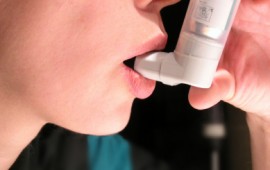Exercise-Induced Asthma – Get the Scoop
Author: Shannon Miller Lifestyle

Certainly you’ve heard of asthma, but have you ever heard anyone mention Exercise-Induced Asthma (EIA)?
If not, you’ve come to the right place to get the scoop. When exercising, you breathe faster and typically through your mouth; breathing through your mouth causes the air to be dryer and cooler than if you were to breathe normally – through your nose. The dry and cool air makes the conditions just right for experiencing EIA. Interestingly, 80-90% of individuals with allergic asthma face symptoms of EIA when engaging in vigorous exercise. Symptoms of EIA may be observed during exercise and worsen 5-10 minutes after stopping exercise – they’ll typically cease 20-30 minutes later.
Such Exercise-Induced Asthma symptoms include:
- Coughing (most common)
- Wheezing
- Chest tightness
- Shortness of breath
Sports that involve intermittent period of exercise are normally better tolerated by individuals with EIA. Some examples include:
- Walking
- Volleyball
- Gymnastics
- Baseball
- Swimming (the humid air is a plus)
Some sports that could easily cause a “flare-up” are:
- Distance running
- Basketball
- Soccer
- Ice-hockey/ice-skating (because of having to breathe in cold air)
TIP: If you suspect that you or your child may be affected by exercise-induced asthma, it’s important to contact a healthcare provider before engaging in any exercise regimen. The good news is that having this condition does not mean that you cannot be a successful athlete. In fact, many Olympians have exercise-induced asthma yet are very distinguished in their sport.
Source: “Exercise-Induced Asthma”, Asthma and Allergy Foundation of America.
